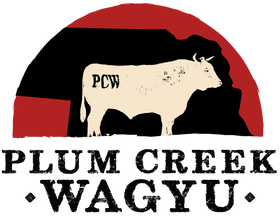Wagyu Myths Debunked: Separating Fact from Fiction
Wagyu beef is one of the most luxurious and sought-after meats in the world, but with its popularity comes a lot of misinformation. From myths about its origins to misconceptions about grading and pricing, there’s plenty of confusion surrounding this premium beef. Today, we’re setting the record straight by debunking some of the biggest Wagyu myths.
Myth #1: Wagyu and Kobe Beef Are the Same Thing
🚫 False! While all Kobe beef is Wagyu, not all Wagyu is Kobe.
✅ The Truth:
-
Wagyu refers to four specific Japanese cattle breeds known for their superior marbling.
-
Kobe beef is a specific brand of Wagyu from the Hyogo prefecture in Japan, meeting strict certification standards.
-
There are other premium Wagyu brands like Matsusaka, Omi, and Hida that are just as exceptional.
Myth #2: All Wagyu Beef Comes from Japan
🚫 False! Wagyu is now raised worldwide, including the U.S., Australia, and beyond.
✅ The Truth:
-
While Japan is the birthplace of Wagyu, high-quality Wagyu cattle have been bred in America, Australia, and other countries for decades.
-
American Wagyu is often a cross between Japanese Wagyu and Angus, creating a unique flavor profile.
-
Fullblood Wagyu (100% Japanese genetics) is still available outside Japan, but it’s rarer and more expensive.
Myth #3: Wagyu Is Just “Fancy” Regular Beef
🚫 False! Wagyu is genetically superior to conventional beef.
✅ The Truth:
-
Wagyu cattle have a unique genetic predisposition for high levels of intramuscular fat (marbling), making it incredibly tender and flavorful.
-
The fat in Wagyu has a lower melting point, creating a rich, buttery texture unlike any other beef.
-
Unlike standard beef, Wagyu cattle are raised on specialized feeding programs for 600+ days to enhance marbling.
Myth #4: Wagyu is Unhealthy Because of Its Fat Content
🚫 False! Wagyu fat is actually healthier than conventional beef fat.
✅ The Truth:
-
Wagyu beef is high in monounsaturated fats, the same heart-healthy fats found in olive oil and avocados.
-
It contains a better ratio of omega-3 and omega-6 fatty acids, which have anti-inflammatory benefits.
-
Because of its rich flavor, you can enjoy smaller portions while still feeling satisfied.
Myth #5: Wagyu Must Be Cooked Well-Done to Render the Fat
🚫 False! Wagyu is best enjoyed at medium-rare to medium for optimal flavor.
✅ The Truth:
-
The fat in Wagyu melts at a lower temperature than regular beef, so it doesn’t need excessive cooking.
-
Cooking it beyond medium can actually diminish the texture and delicate flavors.
-
For the best experience, Wagyu should be seared quickly at high heat and served warm.
Myth #6: Wagyu Isn’t Worth the Price
🚫 False! The quality, flavor, and texture make Wagyu a premium investment.
✅ The Truth:
-
The superior marbling, tenderness, and umami-rich flavor of Wagyu are unmatched.
-
Wagyu cattle require more time, care, and specialized feeding, leading to its higher price.
-
Even small portions of Wagyu deliver a more luxurious dining experience than regular beef.
Final Thoughts: The Truth About Wagyu
Wagyu isn’t just hype—it’s a truly unique beef experience that stands out from all other meats. Now that you know the facts, you can confidently enjoy Wagyu without falling for the myths.
At Plum Creek Wagyu, we take pride in offering authentic, premium Wagyu beef raised with the highest quality standards. Ready to experience the real deal? Shop our selection today!
Related Posts
Sustainability in Wagyu Ranching: How Plum Creek Wagyu is Committed to the Environment
Explore how Plum Creek Wagyu is committed to sustainability with practices like rotational grazing, water conservation, humane treatment of cattle, and more. Learn about our efforts to produce high-quality beef while protecting the environment.
Wagyu Beef vs. Angus Beef: A Flavor Showdown
Discover the differences between Wagyu beef and Angus beef in this comprehensive showdown. Learn about flavor, texture, and the overall eating experience to determine which premium beef is right for you.
Wagyu Beef Recipes for Every Season: From Summer Grilling to Winter Braising
Explore seasonal Wagyu beef recipes perfect for any time of the year. From summer grilling to cozy winter braises, discover easy and delicious ways to incorporate premium Wagyu into your meals.
Health Benefits of Wagyu Beef: Why It's a Premium Choice
Discover the health benefits of Wagyu beef, from its heart-healthy monounsaturated fats to its higher levels of omega-3 fatty acids and CLA. Learn why Wagyu beef is a premium choice for those seeking a flavorful yet healthier alternative to traditional meats.
Pairing Wagyu Beef with Wines: A Guide to the Perfect Match
Discover expert tips on pairing Wagyu beef with the perfect wines. From Ribeye to Filet Mignon, explore the best wine matches to elevate your dining experience and make every bite of Wagyu beef unforgettable.
The History and Origins of Wagyu Beef: From Japan to Nebraska
Explore the rich history of Wagyu beef, tracing its origins from ancient Japan to the modern-day farms of Nebraska. Learn about the unique breeding practices and cultural significance of Wagyu, and discover how Plum Creek Wagyu brings this exceptional beef to your table.








